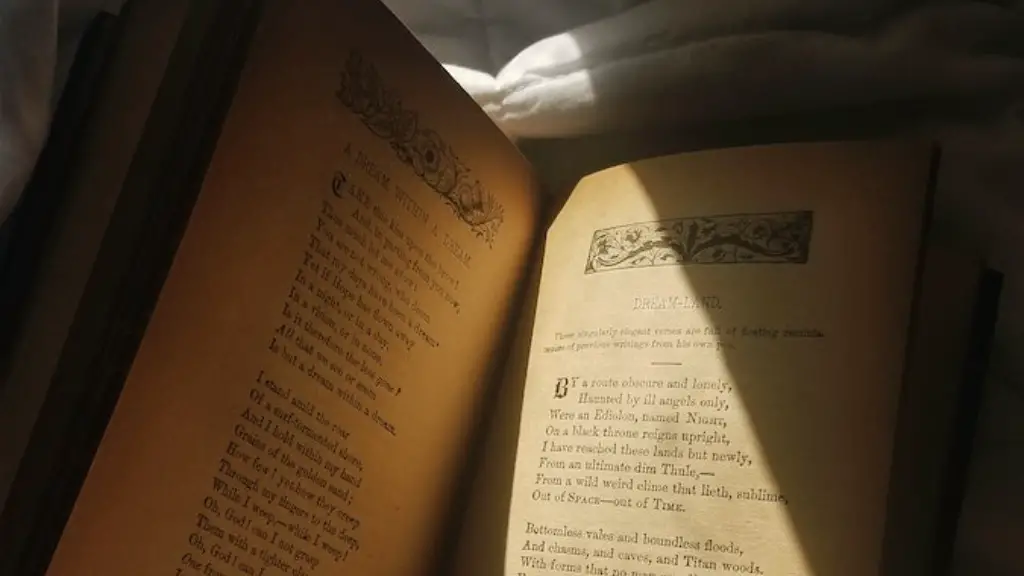What made Langston Hughes a successful writer?
Langston Hughes was one of the most influential writers of the 20th century. His poetry, short stories and novels helped define the Harlem Renaissance and establish what was called the “New Negro” movement. But what was it about his writing that made him stand out in such a crowded field of African American writers?
Perhaps one thing that set Hughes apart was that he was unapologetically a poet of the working class. In the 1920s and ’30s, poverty plagued African Americans across the country. His poems gave voice to the hardships and joys of the working class. His most famous poem, “Let America Be America Again,” paints a haunting picture of America and all it promises yet fails to deliver.
Hughes also recognized the need for African Americans to tell their own stories. He championed the cause of his contemporaries, publishing the work of other African American authors, helping to popularize the Harlem Renaissance and setting a standard for self-expression among African Americans in the process. In his works, Langston Hughes also featured strong female characters, portraying them as agents of change and offering his readers a different perspective on African American life.
Additional factors that contributed to Hughes’ success include his mastery of language and storytelling. He crafted his poems in a way that was both accessible and poignant, making them meaningful to a wide range of readers. His works weren’t just entertaining, they were also enduring pieces of literature that examined identity and American culture.
Furthermore, Hughes was creative in his approach to writing. He experimented with different forms, such as jazz rhythms, blues, and spirituals, to give his poetry an added dimension. His use of traditional and non-traditional themes and imagery allowed readers to explore their own identities and relationships within their communities.
All in all, Langston Hughes was a successful writer because he combined artistry, craftsmanship and social awareness. His work spoke to the struggles facing African Americans and to the possibilities of change in a powerful, meaningful way. He wrote from his unique perspective, but he also wrote from a place of togetherness, revealing to readers the bonds that can come from shared experiences and struggles. In doing so, Hughes showed the world what it looks like to write with true heart.
How did Langston Hughes shape the Harlem Renaissance?
The Harlem Renaissance was a cultural and literary movement that took place in the 1920s and 1930s. The movement was rooted in the African American experience of Jim Crow discrimination and racism. It was fueled by a wave of social mobility and the emergence of writers and intellectuals like Langston Hughes.
As one of its most prolific and influential authors, Hughes helped to define the Harlem Renaissance by popularizing the movement. His poetry and stories gave readers a window into African American culture and struggles in a way that was both raw and evocative. He broke down stereotypes of African American life, exploring the complexity and beauty of the community instead. He also wrote about the power of resilience, the value of creativity and the need for self-expression.
In addition to his writing, Hughes also helped to bring attention to the Harlem Renaissance in other ways. He produced plays and musicals with both white and African American writers, performers and musicians. He was also a mentor to younger writers, showing them the value of writing about their own experiences and culture. His influence extended beyond the American literary scene to the international stage, where his work was embraced as a celebration of African American creativity and culture.
Langston Hughes left an indelible mark on the Harlem Renaissance. His works were a beacon of hope for African Americans, a reminder that their stories were worth telling and that change was possible. His words, both poetic and revolutionary, remain relevant today.
What were Langston Hughes’s Legacy?
In the years following Langston Hughes’s death in 1967, his work earned him an iconic status in the literary world. His contributions to the Harlem Renaissance, coupled with his activism on behalf of African Americans, have ensured that he has become an important figure in African American history and culture.
His most famous works remain some of the most recognizable examples of African American literature. He wrote in a variety of forms, from the blues to the novel, and his words have inspired generations of readers and writers. His work is still taught in classrooms today, and his influence extends beyond literature to music, theater, and film.
Moreover, Hughes’s legacy can be seen in the social movements he championed. His writings on the changing African American experience have many resonances across the history of black civil rights, offering readers a chance to reflect on their own lives and how the past has impacted their present. Even more than 50 years after his death, Hughes is still regarded as one of the most influential African American writers and activists of the 21st century.
What challenges did Langston Hughes face in his writing?
Langston Hughes was one of the most celebrated writers of the Harlem Renaissance. Yet despite his success, he was forced to confront numerous challenges and obstacles in his writing.
For instance, Hughes often found himself in the middle of debates over the direction of African American culture and literature. On one side, there were writers and intellectuals who wanted to focus on the talent and beauty of African American expression. On the other side, there were voices that wanted to address the underlying politics of oppression and inequality.
Another challenge facing Hughes was that he often had to write for and about a white audience. His work was often read by a predominantly white audience, and he had to choose his words carefully in order to be understood. Despite the pressures he faced, Hughes managed to craft his words so that they spoke to readers of all backgrounds.
Langston Hughes also had to contend with the demands of being a prolific writer. He was constantly producing work, ranging from poetry to novels and plays. Though he was able to manage his time and workload, there was still a strain on his creative energy. He had to rely on his own creative will and perseverance to keep writing, no matter the obstacles he faced.
How has Langston Hughes’s legacy been preserved?
Langston Hughes has been commemorated as one of the most influential African American writers of the 20th century. His legacy has been preserved and celebrated in numerous ways.
For example, in 2002, a bronze bust of Hughes was unveiled in Writers Corner in Merriam Park, Saint Paul, Minnesota. The sculpture was created by artist Quin B. Mathis and was commissioned to honor the legacy of Hughes and the other African American writers of the Harlem Renaissance. Other monuments of Hughes can be found throughout the United States, including the Langston Hughes Memorial in Chicago and the Langston Hughes Memorial in Lawrence, Kansas.
Langston Hughes’s work has also been kept alive in other ways. His poetry has been set to music, and there have been several films and plays that have been adapted from his works. His words are also used in classrooms, where students are given a chance to read and explore his works in order to better understand their own literary and cultural heritage.
It is clear that Langston Hughes’s legacy has been preserved in a variety of ways. His work has allowed readers to gain a greater appreciation for African American literature and culture, and his words have left an indelible mark on the world.
How did Langston Hughes use symbolism to express his views?
Langston Hughes often used symbolism to convey his views in his writing. His works featured various images, from the recurring “Dreams” theme of hope and resilience to the symbolic “Salvation” of faith. Hughes also used a variety of animals and birds in his works to symbolize the collective experience of his characters.
For example, in his famous poem “The Negro Speaks of Rivers,” Hughes uses the image of the river to symbolize the interconnectedness of African Americans throughout history. The symbol of the river also speaks to Hughes’s desire to express the strength and beauty of African American culture.
Hughes also used symbols to express his political views. In “I, Too,” he takes the symbol of the star, which commonly signifies freedom and hope in American culture, and uses it to express his feelings on racial segregation. The star of this poem is a symbol of solidarity, of hope that there will one day be equal rights for all.
Langston Hughes’s symbolism is powerful and moving. He used literary devices to evoke meaning and emotion in his works, which allowed readers to discover and understand his worldview in a new and powerful way.
What impact did Langston Hughes have on the civil rights movement?
The civil rights movement of the 1960s and ’70s owes much to the work of Langston Hughes. His words resonated with African Americans during this tumultuous period, and more than 50 years later, his works remain a source of inspiration and hope.
The civil rights movement was rooted in Hughes’s calls for solidarity and change. His works addressed racism, inequality and injustice head on, and his critique was informed by his own experiences with racism. In poems such as “I, Too,” Hughes spoke directly to the struggles of African Americans and provided a rallying cry for those seeking change.
Hughes was also a proponent of nonviolent resistance, a value adopted by civil rights activists. He believed in the power of peaceful protest and the importance of collective action. His words were a way to inspire people to stand up for what they believed in and to fight for their rights.
Langston Hughes was a key figure in the civil rights movement. His words inspired a generation of activists, and his work continues to be an inspiration to those fighting for social justice today.





